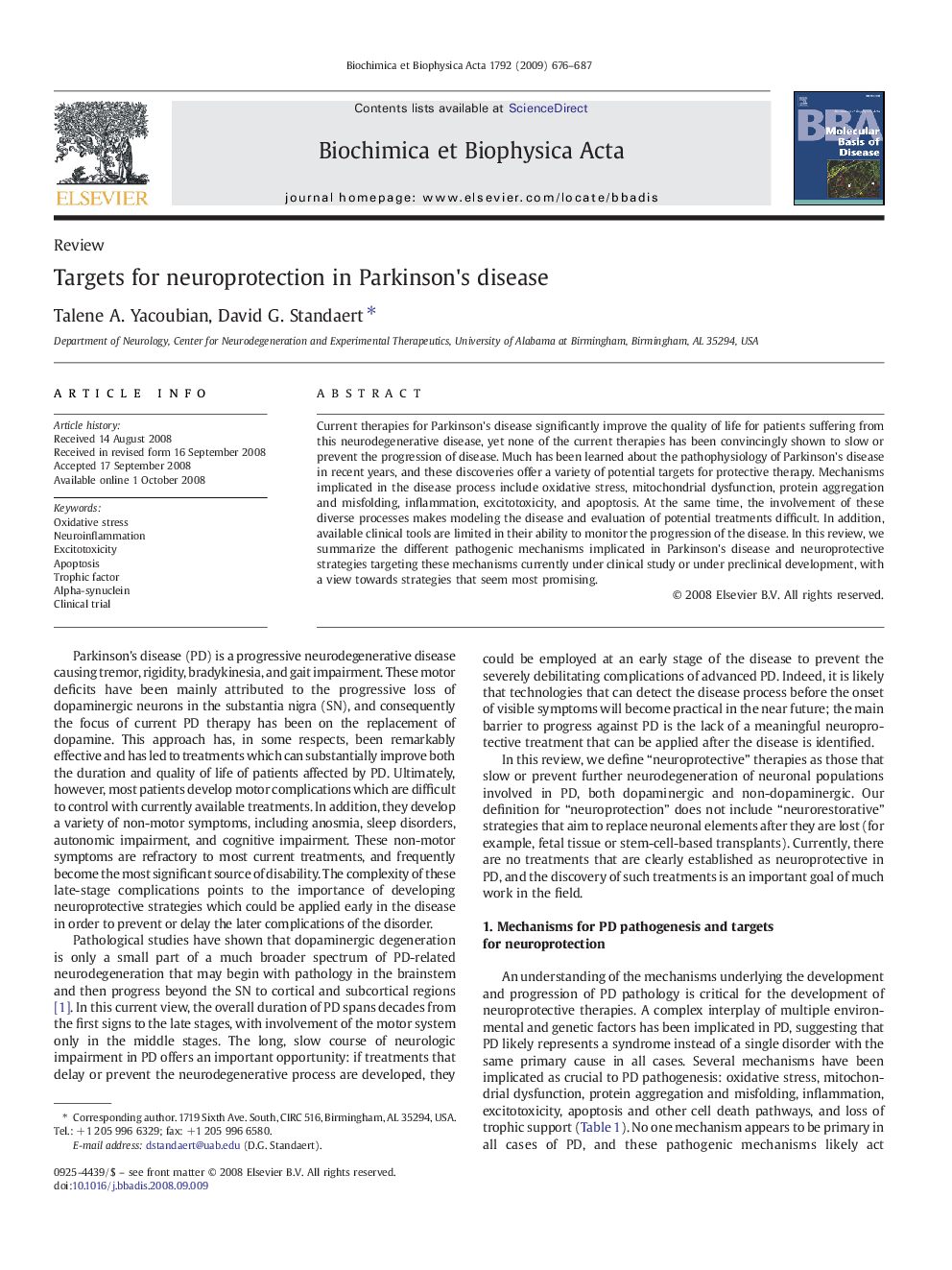| Article ID | Journal | Published Year | Pages | File Type |
|---|---|---|---|---|
| 1905478 | Biochimica et Biophysica Acta (BBA) - Molecular Basis of Disease | 2009 | 12 Pages |
Current therapies for Parkinson's disease significantly improve the quality of life for patients suffering from this neurodegenerative disease, yet none of the current therapies has been convincingly shown to slow or prevent the progression of disease. Much has been learned about the pathophysiology of Parkinson's disease in recent years, and these discoveries offer a variety of potential targets for protective therapy. Mechanisms implicated in the disease process include oxidative stress, mitochondrial dysfunction, protein aggregation and misfolding, inflammation, excitotoxicity, and apoptosis. At the same time, the involvement of these diverse processes makes modeling the disease and evaluation of potential treatments difficult. In addition, available clinical tools are limited in their ability to monitor the progression of the disease. In this review, we summarize the different pathogenic mechanisms implicated in Parkinson's disease and neuroprotective strategies targeting these mechanisms currently under clinical study or under preclinical development, with a view towards strategies that seem most promising.
